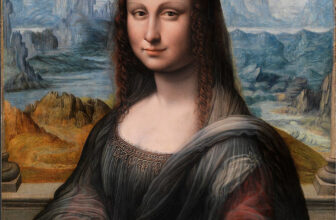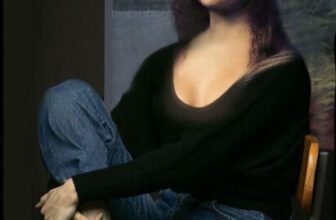
Mona Lisa: Beyond the Glass: A Revolutionary VR Experience
“Mona Lisa: Beyond the Glass” is the Louvre’s first foray into virtual reality, developed in collaboration with HTC Vive Arts and the Paris-based VR studio Emissive. The experience was part of the museum’s commemoration of the 500th anniversary of Leonardo da Vinci’s death. The project aimed to provide an intimate, detailed exploration of the Mona Lisa, transcending the limitations of traditional museum viewing.
The Experience
The VR journey lasts approximately seven to eight minutes, transporting users into a virtual space where they can observe the Mona Lisa without the usual crowds and protective glass. This setting allows for an up-close examination of the painting’s intricate details, including brushwork and subtle textures that are often missed during a standard museum visit.
Beyond mere observation, the experience delves into the history and techniques behind the artwork. Users learn about Lisa Gherardini, the woman believed to be the subject of the painting, and gain insights into da Vinci’s innovative methods, such as his use of sfumato—a technique that creates a soft transition between colors and tones. The VR experience also incorporates scientific research, including infrared scans, to reveal underdrawings and changes made during the painting process.
Accessibility
Initially available at the Louvre during the Leonardo da Vinci exhibition, “Mona Lisa: Beyond the Glass” has since been made accessible to a global audience. The experience can be downloaded for free on various VR platforms, including HTC’s VIVEPORT, SteamVR, and mobile VR applications for iOS and Android devices. This accessibility ensures that art enthusiasts worldwide can engage with the Mona Lisa in a deeply personal and informative manner.
Public Reception and Reviews
The VR experience has been met with widespread acclaim from both the public and critics. On platforms like Steam, it boasts a “Very Positive” rating, with users praising its educational value and immersive quality. Reviewers highlight the opportunity to appreciate the Mona Lisa’s nuances without the typical distractions of a crowded gallery.
Critics have also lauded the project for its innovative approach to art education. By combining technology with art history, the Louvre has created a model for how museums can enhance visitor engagement and accessibility. The experience is noted for its ability to humanize the subject of the painting and demystify the artist’s techniques, making it a valuable tool for both casual visitors and art scholars.
Addressing Visitor Experience Challenges
The traditional experience of viewing the Mona Lisa at the Louvre has often been described as underwhelming due to large crowds, brief viewing times, and physical barriers. Visitors frequently express disappointment, citing the difficulty of connecting with the artwork amidst the hustle and bustle of the gallery.
In response to these challenges, the Louvre has considered relocating the painting to a dedicated space to improve the viewing experience. The introduction of the VR experience serves as an innovative solution, allowing visitors to engage with the Mona Lisa in a more meaningful and personal way, free from the constraints of the physical museum environment.
“Mona Lisa: Beyond the Glass” represents a significant advancement in how art can be experienced and appreciated. By leveraging virtual reality, the Louvre has not only addressed longstanding visitor experience issues but also set a precedent for the integration of technology in art education and exhibition. This initiative underscores the potential of VR to democratize access to cultural treasures, offering an enriched, immersive encounter with one of the world’s most iconic paintings. image/ Emissive and HTC Vive Arts




